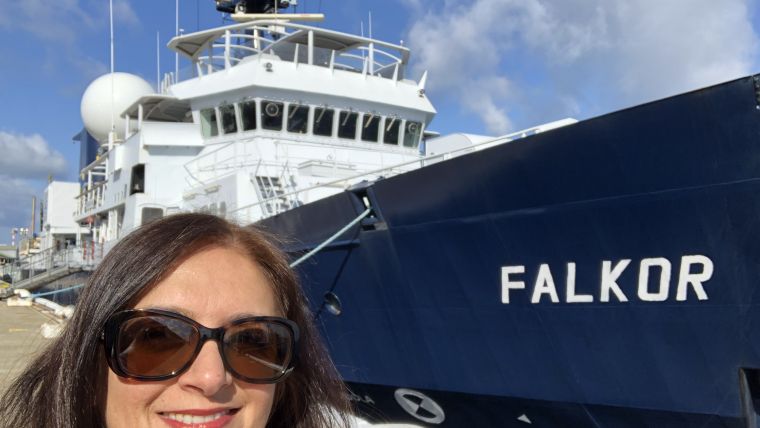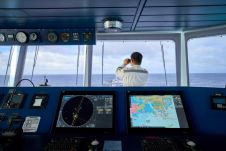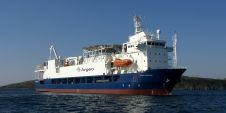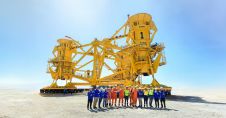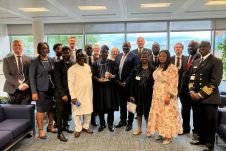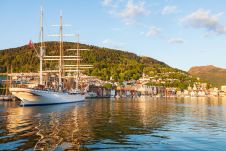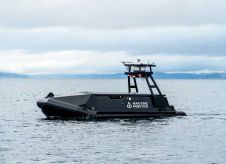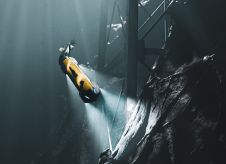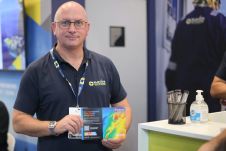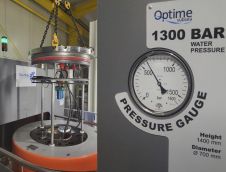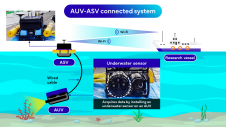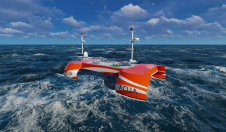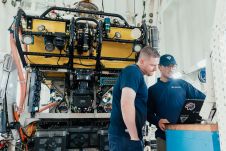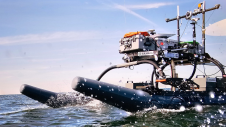New Golden Age of Exploration
Hydro International interviews Jyotika Virmani
Jyotika Virmani was executive director of the Shell Ocean Discovery XPRIZE before she entered Schmidt Ocean Institute (SOI), also as executive director. Two positions at the forefront of state-of-the-art and new technological developments and discoveries, shaping both the future of ocean research and a sustainable future for the oceans, forming the perfect job switch. Hydro International spoke with Jyotika Virmani about SOI and other ambitious projects that are helping to save the ocean. First of all, Virmani explained how she landed the position with the non-profit foundation that Eric and Wendy Schmidt started back in 2009.
It was all about timing. I heard about the position in around March 2019. We had just come back from Puerto Rico, in February, where we had been testing for the XPRIZE and we were gearing up for the judges to make their final decisions and preparing for the award ceremony to wrap up the Ocean Discovery XPRIZE. So, I applied for it. The whole procedure took about a year; they were picking their first executive director, so they were very careful and deliberate. They clearly had some excellent candidates, but in the end I was the lucky one!
Almost immediately after you started, Covid-19 began to have its first implications. How did that impact your work?
I started at the end of February this year, just as Covid-19 started to pop up in the news. I actually travelled around for the first two weeks in this new position, to Copenhagen, Denmark, for a UN Decade of Ocean Science meeting, and from there to Freemantle, Australia, to visit the R/V Falkor and meet some of the crew. When I got back to Los Angeles everything went into lockdown. A lot of what I had planned in those first few months was delayed, but it also speeded up my learning curve because I started and immediately there was a crisis. However, the SOI team is excellent and everyone was very helpful.
How did the lockdown impact the work of SOI?
Schmidt Ocean Institute is a virtual organization. We do not have a single home base. I am in Los Angeles, and we have staff in Hawaii, Seattle, North Carolina, Washington DC, Germany and Spain, all on the shore side of the operation, plus the crew of the Falkor who are from 13 different countries. This organization is accustomed to operations in a virtual environment. The Falkor, with 23 crew, 5 ROV pilots and 11 scientists, had just left for a month-long expedition to the Ningaloo Canyons, off the coast of Australia in March. They were already at sea when the lockdown took hold. So, we carried on with that expedition as planned until April, but it was the last time that we had scientists on board until August. During the summer months, we did our first fully virtual remote expedition, with just our crew and ROV team on board and scientists in their living rooms all over the globe. The schedule this year has been changing rapidly, so we and the scientists haven’t had as much time to prepare as we normally would, but a lot of credit goes to the SOI staff and crew: they pulled it together so that we have managed to navigate the crisis and keep operations going at sea this year.
What was the result of those expeditions?
In April, our ROV team and scientists on board spotted the longest sea creature ever seen, a siphonophore at around 50m in length. This year, it looks like scientists may have discovered about 40 new species on our expeditions, and in October, those aboard Falkor discovered a 500m-tall detached coral reef in the Great Barrier Reef. From that point of view, the expeditions have been really exciting.
What technology do you expect most of in the nearby future?
As we’ve seen in the last few years, unmanned and autonomous systems at sea and the ability to have an autonomous surface vessel that can deploy and recover subsurface devices have been gamechangers. Next year will be a big year for these, with Ocean Infinity’s Armada, Fugro’s SEA-KITs, and the deployment of the Mayflower and Saildrone – all of which show that we are gearing up to utilize these uncrewed or lightly crewed technologies at a much bigger scale than to date.
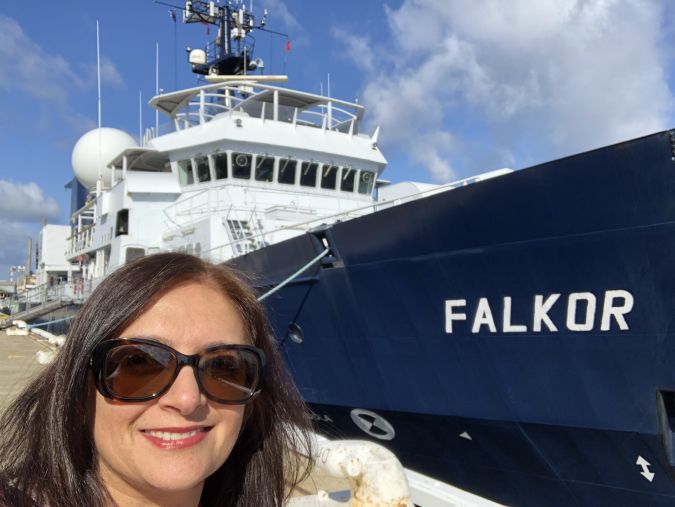
You are involved in Seabed 2030 as well. Do you think it is going fast enough?
I think it is. A few years ago, I did a back-of-the-envelope calculation and estimated that we’ll have the seabed mapped by 2029. The pandemic slows things down of course, but 5% had been mapped when we launched the Ocean Discovery XPRIZE in December 2015 and now we’re at around 20% – in four years’ time! People will argue that this increase stems from a lot of data that was already in existence, but with the advent of new technologies we’re going to start seeing more and more data coming in. I think it will be very close to 100% by 2030!
The Schmidt Ocean Institute is involved in ambitious cooperations: Seabed 2030, and the UN Decade of Ocean Science. How difficult is it to be involved in these projects all around the globe?
SOI started in 2009 and was a proof-of-concept disruptive player in the field by offering free ship time and assets to scientists and technology developers at sea and it has proved itself in the last decade. As the executive director, my role is to look to its future and part of that is to focus on these partnerships, making sure that we continue to build on our previous successes and are an active participant within the international oceanographic community. With the UN Decade of Ocean Science, Seabed 2030, the 30 by 30 programme and an international focus on biodiversity through the Convention of Biodiversity – all in this next decade – the timing is perfect.
The Schmidt Ocean Institute is a philanthropic institute offering free ship time to scientists, who gladly accept. What does it say about the investment or involvement of the public and private sectors in this field?
I think there’s actually a need for all forms of investment in oceanography – public and private, whether through governments, industry or philanthropy. Eric and Wendy Schmidt are indeed fully funding this institute and we do provide ship time at no cost, because scientists have identified access to the ocean as a bottleneck for ocean science research. The ocean is so unexplored and vast that there is a great need for this, and it will take everyone to pitch in to gain a good understanding of the 71% of our planet that we can’t easily see.
Is this the future: public, private, academic and philanthropic organizations working together?
Everyone has a reason for existence. For instance, governments focus mainly on their own country domains, and are not mandated to work in the high seas. Academic institutions, on the other hand, focus on research in unknown territories or to seek greater understanding. The private sector may focus on those areas where there is a profit. In philanthropy, we have the flexibility and freedom to take risks or work in areas that other parties simply can’t, and therefore we complement the work done by others. Collectively, we all contribute towards ocean knowledge.
What do you expect of the UN Decade of Ocean Science?
I hope everybody will be involved and that it will be a great boost for the ocean. The decade is well-timed because new technologies will allow us all to move faster and find solutions, and do work at smaller scales. I hope it will be an incredibly insightful decade, and I hope people will recognize the huge importance of this ocean, which we need to keep vibrant and healthy for all of our sakes.
You said that there’s a bit of a negativity linked to the ocean community. What do you mean by that?
The ocean community has tended to focus on negative things. One big difference between the space and ocean community, which I realized during my time at XPRIZE, is that the space community is always positive and they seem to engage the general public in a way that the oceanographic world has not yet been able to do. But interestingly, the ocean has actual ‘aliens’ and crazy creatures in it, while we are still searching in space. Part of this is communication – the ocean world talks about plastic, overfishing and other problems and doesn’t focus as much on solutions. To engage and inspire the broader public, we need to look forward and make the ocean something positive, weaving in excitement about new discoveries such as the underwater landscapes that we recently saw off the coast of Australia during our live ROV dives.
You called this age the ‘new golden age of ocean exploration’. But we still have real problems, like climate change, that we have to solve – right?
This is why we have to change the way we talk about the ocean. Even without the climate crisis, the role of the ocean was not really well recognized publicly, and now we’re adding on an extra layer of complexity. The old golden age of ocean exploration was looking at the surface, sailing from land to land. Now we are diving into the third dimension and looking under the surface. This new golden age of ocean exploration will change our knowledge of the ocean and this is where I see this next decade pulling together through the UN Decade of Ocean Science – this connects all these different strands of knowledge to address the Sustainable Development Goals, including biodiversity and its role in food security, the climate issues, ocean health and acidification. I hope that by 2030 we won’t be tackling the Sustainable Development Goals individually, but that we will have enough knowledge to show their points of intersection and cohesion and address them holistically.
Where does the hydrographic community come into this?
One of the most fundamental pieces of our understanding of the ocean is a seafloor map, because that provides the underpinnings for knowing what is out there and for other scientific research. The traditional use of hydrographic data tells us where we are, it tells us where resources are, but it is also fundamental to know these things for new applications of ocean science and for ocean management and protection. For example, there is a global programme to protect 30% of the ocean by 2030, but without knowing what is out there, how do we know that we aren’t missing some vital areas to protect?
Do hydrographers recognize their own very important role?
I think some do and maybe some don’t. But Seabed 2030 has been a beacon in that sense, giving the hydrographic community a target. As people and as professionals, we all act on a few things: a simple goal and a clear timeline. Seabed 2030 has both. And in recent years, the importance of a seafloor map has become more prominent in the general oceanographic community.
Do you have a message to the community?
This has been a difficult year and next year probably will be as well. But I am an optimist and I think we have a lot to look forward to: new technologies, the international collaborations and interest that is emerging, fascinating discoveries. I know things are not so positive right now, but a decade is a long time – think of where we were in 2010. A lot has happened in the last ten years, and I think technology is going to bring about ocean discoveries in this next decade at an exponential scale.
Aren’t you ever pessimistic?
No, never! If we only think about problems and not solutions, we’ll get pessimistic. But I think there are enough minds on this planet – we might not know them yet, but they are there and they will emerge – to come up with the solutions to the problems. So, I am always positive.
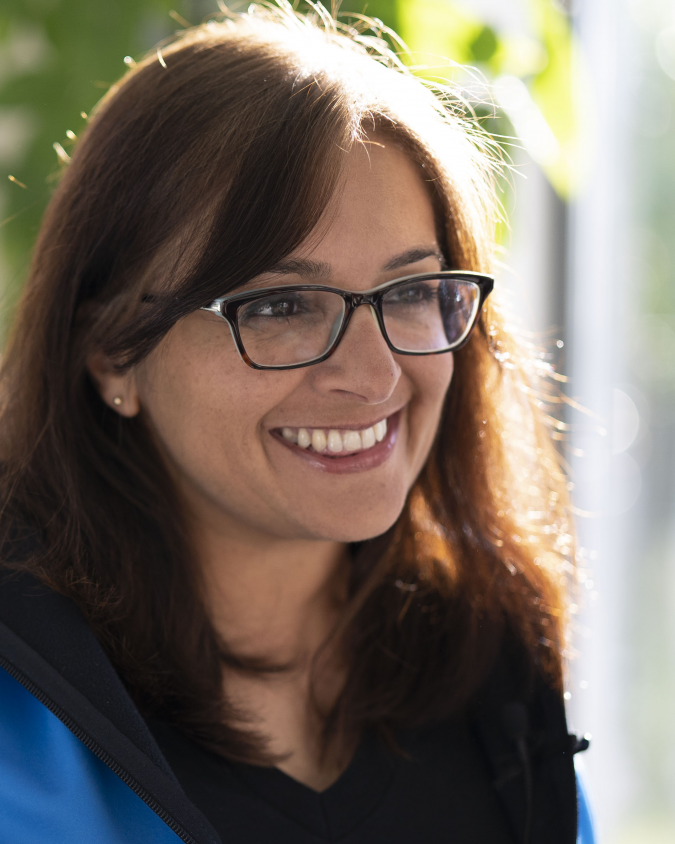

Value staying current with hydrography?
Stay on the map with our expertly curated newsletters.
We provide educational insights, industry updates, and inspiring stories from the world of hydrography to help you learn, grow, and navigate your field with confidence. Don't miss out - subscribe today and ensure you're always informed, educated, and inspired by the latest in hydrographic technology and research.
Choose your newsletter(s)
